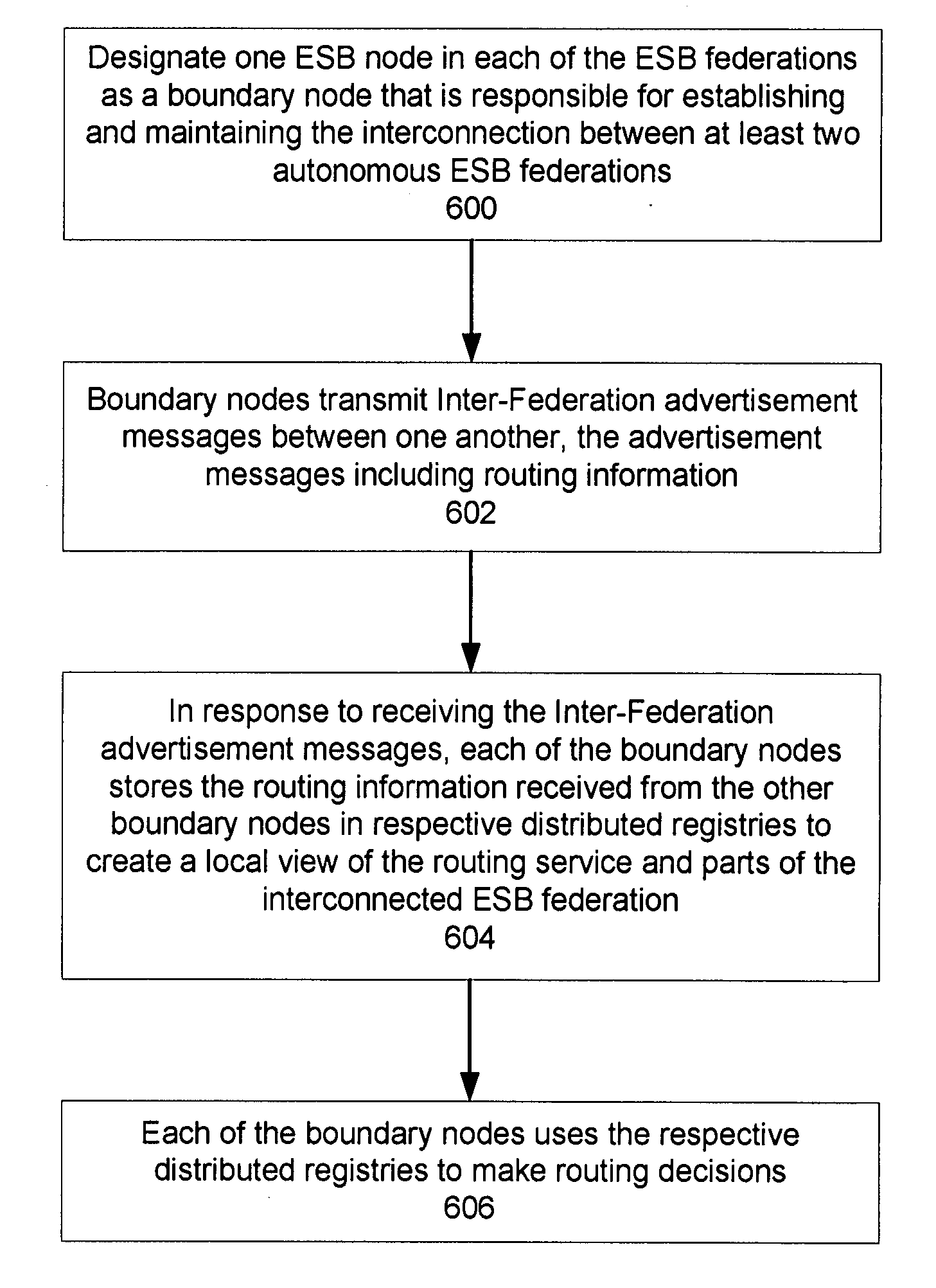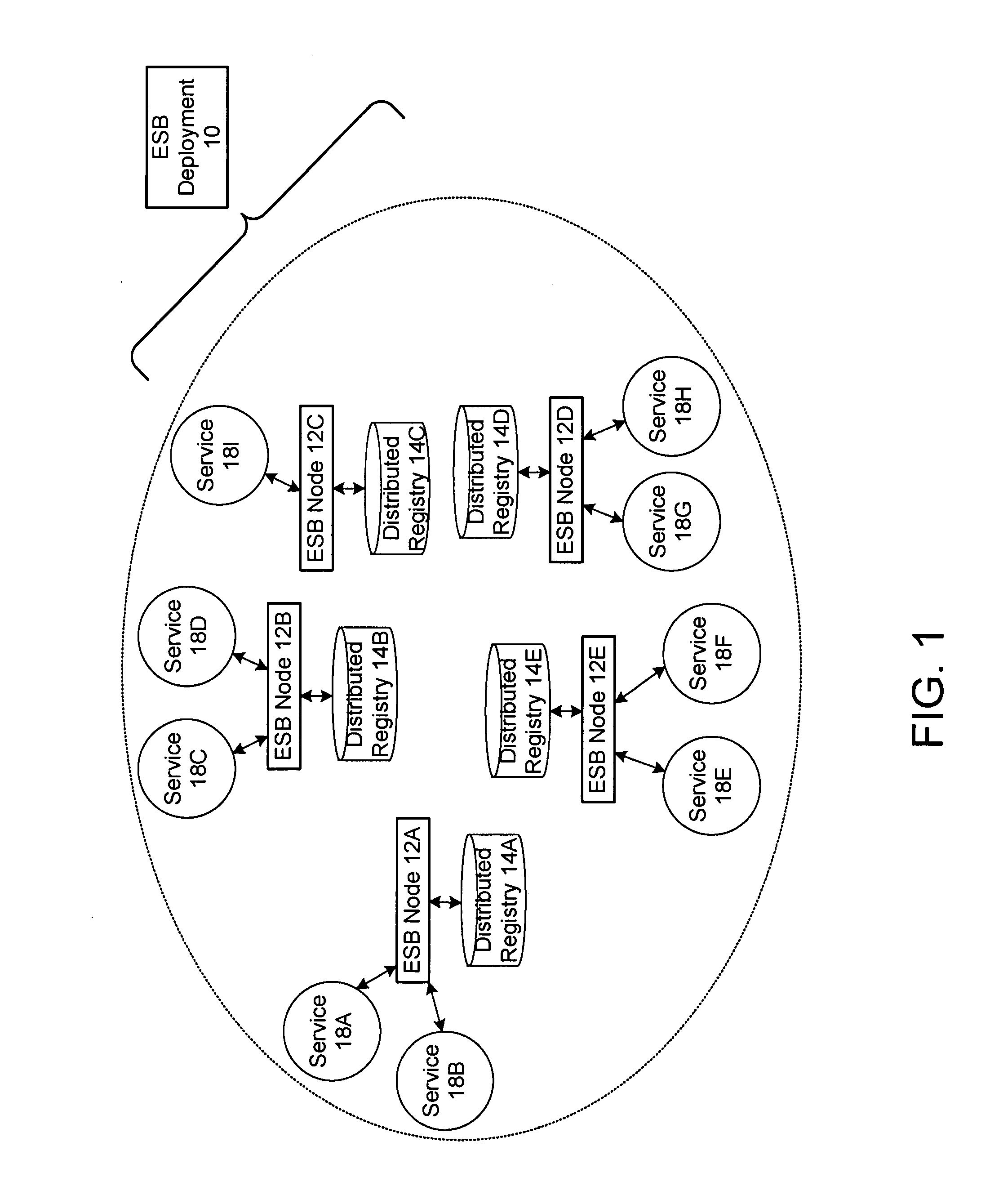Protocol for enabling dynamic and hierarchical interconnection of autonomous federations of enterprise service buses
a technology of enterprise service buses and hierarchical interconnection, which is applied in the direction of instruments, digital computers, computing, etc., can solve the problems of inflexible and impractical solutions for large-scale enterprises, tedious and easy errors in the configuration of such a solution, and no mechanism to change the properties of this mediation
- Summary
- Abstract
- Description
- Claims
- Application Information
AI Technical Summary
Problems solved by technology
Method used
Image
Examples
Embodiment Construction
[0019]The present invention relates to a protocol for enabling dynamic and hierarchical interconnection of autonomous federations of enterprise service buses. The following description is presented to enable one of ordinary skill in the art to make and use the invention and is provided in the context of a patent application and its requirements. Various modifications to the preferred embodiments and the generic principles and features described herein will be readily apparent to those skilled in the art. Thus, the present invention is not intended to be limited to the embodiments shown, but is to be accorded the widest scope consistent with the principles and features described herein.
[0020]The preferred embodiment provides a routing / management protocol for enabling the interconnection of federated enterprise service buses in a dynamic and scalable manner. The routing / management protocol enables creation of ESB federations having topologies that may align with business structures an...
PUM
 Login to View More
Login to View More Abstract
Description
Claims
Application Information
 Login to View More
Login to View More - R&D
- Intellectual Property
- Life Sciences
- Materials
- Tech Scout
- Unparalleled Data Quality
- Higher Quality Content
- 60% Fewer Hallucinations
Browse by: Latest US Patents, China's latest patents, Technical Efficacy Thesaurus, Application Domain, Technology Topic, Popular Technical Reports.
© 2025 PatSnap. All rights reserved.Legal|Privacy policy|Modern Slavery Act Transparency Statement|Sitemap|About US| Contact US: help@patsnap.com



